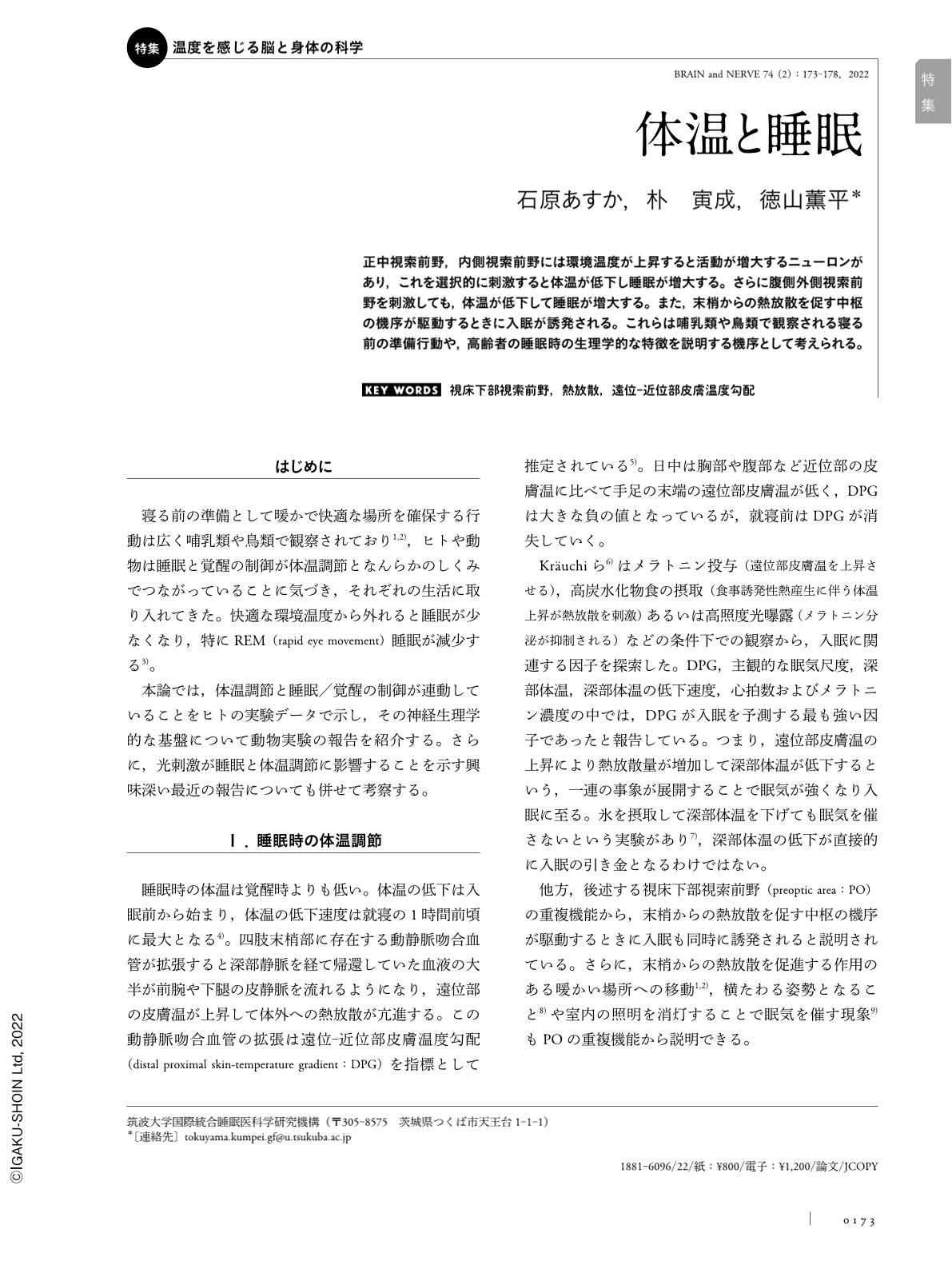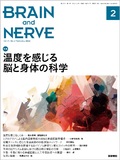Japanese
English
- 有料閲覧
- Abstract 文献概要
- 1ページ目 Look Inside
- 参考文献 Reference
正中視索前野,内側視索前野には環境温度が上昇すると活動が増大するニューロンがあり,これを選択的に刺激すると体温が低下し睡眠が増大する。さらに腹側外側視索前野を刺激しても,体温が低下して睡眠が増大する。また,末梢からの熱放散を促す中枢の機序が駆動するときに入眠が誘発される。これらは哺乳類や鳥類で観察される寝る前の準備行動や,高齢者の睡眠時の生理学的な特徴を説明する機序として考えられる。
Abstract
Mammals and birds seek a warm environment prior to sleep, which triggers vasodilatation and body cooling. Ambient temperatures outside the thermoneutral zone suppress sleep, particularly rapid eye movement (REM) sleep. We discuss the neurocircuit interactions associated with thermal and sleep regulation that occur primarily in the hypothalamic areas. An increase in ambient temperature stimulates the median preoptic/medial preoptic area of the hypothalamus, decreases body temperature, and increases non-REM sleep. Similarly, optical stimulation of the ventrolateral preoptic nucleus, which contains galanin (VLPOGAL), results in body cooling and non-REM sleep. A decrease in VLPOGAL disrupts sleep in elderly individuals and may also be associated with reduced decline in core body temperature during sleep. However, stimulation of neurons that synthesize melanin-concentrating hormone in the lateral hypothalamus decreases body temperature and induces REM sleep. We also discussed the acute effect of light on sleep induction and decreased body temperature, implicated with gamma-aminobutyric acid-ergic neurons in the preoptic area. Further investigation is needed to determine the mechanisms that induce physiological responses in diurnal and nocturnal species. These studies will contribute to a better understanding of the association between sleep and thermoregulation.

Copyright © 2022, Igaku-Shoin Ltd. All rights reserved.


